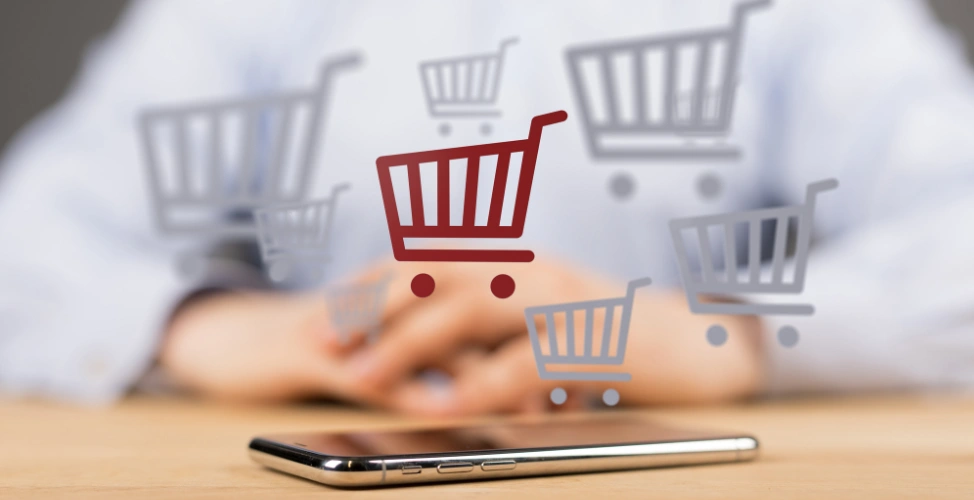September 02, 2021
Migrate from Wix to Shopify: Tips to Keep Your Site Speed and Rankings Intact in Australia
So many Australian stores make the jump. The goal? Keep every hard-earned ranking, keep the site loading quick, and keep customers coming back for more. The catch? A messy move can ‘break’ your SEO or turn your checkout into a waiting room. Migrate from wix to shopify right, and you’ll be running a sharper, faster, and more future-ready store. This guide of SmartOSC breaks down the steps, uncovers pitfalls, and explains how local brands stay ahead.

Understanding the Need to Migrate from Wix to Shopify
Making the switch isn’t just a technical job. It’s a turning point for any Australian brand looking to grow. Before deciding to migrate from Wix to Shopify, it’s worth looking at why so many local businesses end up needing more than what Wix can deliver.
What Does It Mean to Migrate from Wix to Shopify?
A lot of shop owners imagine migration as some quick weekend task. The reality is far different. To migrate from wix to shopify is to pull out the foundation and rebuild, brick by brick, so nothing slips through the cracks.
Think about all the moving parts: product pages, customer records, payment setups, blog posts, and behind-the-scenes analytics. Moving isn’t just about copying files. It means giving your store a new engine. You get sharper checkout flows, more options for inventory management, and access to a whole marketplace of integrations that just don’t exist on Wix.
Some brands start out on Wix because it feels easy, fast, and light on paperwork. But as orders pile up, what used to work begins to groan. Growth brings complexity, and soon enough, limitations become roadblocks.
Why Businesses in Australia Outgrow Wix
Walk through any Aussie startup event and you’ll hear the same pattern. Stores that began on Wix, selling crafts, specialty foods, even niche electronics, hit a ceiling.
A boutique from Melbourne scaled fast, then found Wix’s inventory system too ‘basic’ for tracking real stock across both their online shop and a physical market stall. Another Brisbane retailer kept losing time patching together payment solutions just to process Aussie debit cards and Afterpay.
The kicker? Slow site speed on busy days. Shopify stands out here for many locals. A Statista report found that 45% of high-growth Australian eCommerce brands cited platform speed and scalability as the number one reason for making the switch.
It’s not just technical limits. SEO on Wix leaves much to be desired, fewer customisation options, patchy structured data, and less control over critical details like meta tags or URL structure.
The Benefits of Moving to Shopify
Migrating doesn’t just fix problems. It opens new doors.
- Speed is the first thing your customers notice. Shopify’s servers are designed to handle sudden traffic spikes, keeping your pages crisp and mobile-friendly even when hundreds of shoppers browse at once.
- Inventory management becomes a breeze. No more hacking together spreadsheets or waiting for batch updates. Instead, Shopify lets you group products, track variants, and even automate back-in-stock alerts.
- Payment and shipping for the Australian market are baked right in. Connecting with local carriers like Australia Post or integrating with payment providers like Zip and Afterpay happens in a few clicks, not with weeks of custom coding.
- SEO tools get a major lift. Shopify’s native setup helps you climb Google’s rankings with clean code, faster load times, and the ability to tweak every meta tag, alt text, and redirect, without calling in an IT team.
Preparing for a Smooth Migration: What to Do Before You Move
Planning ahead gives you a major advantage once you start the move. A little preparation now can save weeks of frustration and lost sales down the line.
Key Pre-Migration Steps
Getting ready is where most migrate from wix to shopify projects succeed or fail. Even a small shop needs a clear plan before touching a single file.
- Back up every asset: Products, customer emails, images, and blog posts should be saved somewhere safe. Don’t count on ‘the cloud’ alone, download local copies of anything you can’t risk losing, especially images and customer reviews.
- Map your current website: Make a detailed spreadsheet that lists every live URL, from top-selling product pages to obscure category links. This reference is a lifesaver for finding missing pages or fixing broken links once the move is done.
- Set clear goals: Decide exactly what you want to achieve with migration. Maybe you want your site to load twice as fast on mobile, or you’re after more accurate analytics to cut down on abandoned carts. Writing these goals keeps the team focused when new themes or tempting apps show up.
Tools and Resources for Australian Merchants
No brand should walk this path solo.
For simple data transfers, apps like Cart2Cart and Matrixify speed up the grunt work. For custom projects, check the Shopify Plus partner directory, where certified experts share their success stories.
Local migration agencies often know all the little quirks, like GST settings, local shipping rate plugins, or tricks for keeping your .com.au domain in Google’s good books. Many Australian brands call in these teams for peace of mind, especially when deadlines are tight or catalogs run into the thousands of SKUs.
See more: The Ultimate Guide to Magento to Shopify Migration for Growing Australian Brands
How to Migrate from Wix to Shopify Without Losing Site Speed or SEO Rankings
Getting migration right is what sets apart stores that keep their edge. This is where the real work begins, where every detail matters for your traffic, conversions, and customer trust.
Step-by-Step Migration Process
There’s a clear rhythm to a successful migration. Most successful projects follow a process that guides every step, from data export to post-launch checks.
- Start by exporting every record from Wix: product data, images, order history, customer lists, and blog content.
- Set up your Shopify store on a test domain, choosing a fast, mobile-first theme (skip the ones overloaded with animations).
- Use your preferred migration app or CSV import to move bulk data. Don’t trust automation for everything; review each product to catch missing images or weird formatting.
- Manually rebuild product and collection pages. This is the moment to fix clunky layouts or update outdated descriptions.
- Carefully reapply all SEO assets: meta titles, descriptions, alt text, and structured data. Double-check every detail, especially for your top-selling products.
- Transfer your .com.au domain, update DNS, and set up 301 redirects for every old URL. This step keeps Google (and returning shoppers) from wandering into dead ends.
Essential SEO Considerations During Migration
Migrating your store can either tank your traffic or shoot you up Google’s results.
- Keep URL structure as close to the original as possible. Major changes confuse both customers and search engines.
- Set up 301 redirects before launch, not after. Crawlers need instant clues for where your new pages live.
- Reapply every meta title, description, and schema markup. Pages with missing SEO data drop out of rankings fast, costing you organic sales and trust.
Speed Optimization Tips for Your New Shopify Site
Speed sells, plain and simple. A slow site will drive shoppers away in seconds.
- Pick a Shopify theme built for speed. Minimalist, mobile-first themes often load twice as fast as flashy ones.
- Compress every image. Don’t just upload the same graphics you used on Wix, run them through an online optimizer.
- Use as few third-party scripts and apps as possible. Each extra widget can slow down checkout, sometimes causing abandoned carts.
- Schedule monthly speed tests using Google PageSpeed Insights. Regular tuning keeps your site running like it did on launch day, not months later when slowdowns creep in.
Post-Migration Checklist: Testing, Launch, and Ongoing Maintenance
Crossing the finish line isn’t where the work ends. It’s where the next stage starts. We will cover what to check and adjust right after you migrate from wix to shopify.
Testing Before Launch
Imagine walking into a shop and every second aisle is blocked or mislabeled. That’s what a half-checked website feels like.
Before launch, test every journey a real shopper might take: from product search to checkout, sign-up to order tracking.
Click through every link. Fill in every form. Place test orders on desktop, mobile, Chrome, and Safari. Catching bugs now means you won’t get angry customer emails later.
SEO and Analytics Verification
After launch, double-check all analytics setups.
Is Google Analytics tracking conversions? Has your Facebook Pixel started firing on checkout pages?
Submit your new sitemap to Google Search Console and look for crawl errors within 48 hours. If 404s start popping up, fix them with fresh redirects fast.
A missing conversion pixel or a broken sitemap can quietly sap revenue for weeks before you notice.
Ongoing Optimisation for the Australian Market
The job isn’t finished at launch. Test your site speed every month, especially after adding new apps or plugins.
Keep local SEO on point. That means updating your Google My Business profile, building links from local business directories, and staying active in community events that drive press coverage (and backlinks).
Review and remove unused apps every quarter. Even a single abandoned app can slow load times or open a security gap.
Common Pitfalls and Mistakes to Avoid
Digital transformation falls apart for predictable reasons. It’s often the little oversights that create the biggest headaches down the track.
- Skipping 301 redirects almost always tanks SEO rankings. Google won’t forgive lost URLs.
- Rushing to launch without a mobile check leads to lost sales. More than half of Aussie traffic is mobile-only now.
- Failing to bring over every bit of SEO metadata (or forgetting structured data) leaves product pages lost in the shuffle.
- Underestimating the time for large migrations leads to missed deadlines, stress, and late-night support calls.
- Ignoring the specifics, like local GST tax rules, regional shipping rates, or preferred Aussie payment providers, causes checkout nightmares.
Why Work with a Professional Shopify Migration Partner in Australia?
Choosing to work with an experienced migration partner during your migrate from wix to shopify project can mean the difference between a stress-free move and months of headaches. Before diving into all the technical benefits, let’s look at why so many Australian brands trust local experts to guide them through the process.
Benefits of Expert Help
Not every brand has a tech team on standby. Many small to medium businesses in Australia run lean and focus their resources on sales or customer service, not on maintaining a web development crew. That’s where a dedicated migration partner comes in, they become your safety net during one of the riskiest changes a business can face.
- Specialists keep your store online through the move, preventing surprise downtime or lost sales. Their support means your revenue isn’t interrupted and you don’t have to worry about unexpected outages that could frustrate loyal shoppers.
- They know Australian business quirks, GST, shipping, and which payment gateways matter. They’ve handled enough local projects to know what trips up tax compliance, which shipping methods are fastest, and how to match payment systems like Afterpay, Zip, and PayPal to buyer expectations.
- When technical issues pop up, a local partner spots and fixes them before they spiral. Instead of hunting down answers in overseas forums or waiting days for a response, you get fast, personal help, often before you even notice there’s a problem brewing.
Choosing the Right Agency or Consultant
Picking a Shopify migration partner is about more than just tech. It’s trust, reliability, and protecting your investment. A great partner does more than press buttons. They watch your back through a risky move. One mistake can mean lost sales or weeks fighting to recover your rankings.
- You’ll keep your store live throughout the process, so customers don’t hit a blank page or get frustrated by surprise outages. Experienced specialists anticipate issues and fix them on the fly, keeping your sales moving and your reputation intact.
- Australian-specific tax, payment, and shipping quirks are second nature to local experts. They’ve dealt with GST, mapped out shipping zones with local couriers, and plugged in payment systems like Afterpay and Zip. No guessing, no trial and error, just practical know-how that saves you time and trouble.
- When tech issues pop up, you get help right away from someone who actually speaks your language and understands Australian business hours. No waiting in online queues for days, no cut-and-paste responses from distant call centers. Problems get solved before they hit your bottom line.
- Support doesn’t stop after launch. A trusted migration partner offers ongoing help, so you’re never left wondering what to do next if a plugin breaks or Google rolls out a new update.
- Working with a reputable agency gives you access to proven credentials, testimonials, and real experience, not just sales pitches. You can check their track record and see exactly how they’ve helped businesses like yours make a clean switch and grow faster on Shopify.
Watch more: Lightspeed to Shopify Migration: A Complete Australian eCommerce Transition Guide
SmartOSC – Your Trusted Partner for Seamless Wix to Shopify Migration
Australian stores aren’t after shortcuts. They want migration done right. When it comes to switching from Wix to Shopify, most brands are searching for more than just basic support. They’re after a partner with real industry runs on the board, someone who knows how to deliver a project without drama or disruption.
SmartOSC isn’t just another agency. We’re the team Australian and APAC businesses trust for growth and reliability, even when the stakes are high.
- Digital commerce strategies built for the real world: Every store, from niche startups to retail giants, gets a migration plan tailored for long-term wins, not just a quick launch.
- End-to-end digital transformation: Our projects span far beyond moving data. We help businesses rethink processes, automate more, and adapt for whatever comes next.
- Custom applications and cloud tech: Whether it’s integrating with local payment gateways or building tools unique to your workflows, SmartOSC covers the technical details so you don’t have to stress.
- Trusted tech partnerships: SmartOSC holds proven relationships with Magento, Adobe, Sitecore, and Shopify Plus, so your migration benefits from the latest and best each platform provides.
- Real, local results: Our team’s supported projects like ASUS Singapore and helped Australian retail icons expand their reach, improve speed, and lock in better search results.
When speed, rankings, and a stress-free migration matter, SmartOSC brings the muscle, the track record, and a relentless focus on seeing your business succeed, right up to the finish line and beyond.
FAQs: Migrating from Wix to Shopify in Australia
Will migrating from Wix to Shopify affect my Google rankings?
A well-managed migration shouldn’t harm your SEO performance. However, rankings can drop if critical elements like 301 redirects, meta tags, or URL structures are mishandled. The key is to plan carefully, redirect all existing pages properly, replicate your content structure, and submit an updated sitemap to Google. With the right technical oversight, your rankings can remain stable or even improve post-migration.
How can I keep my site speed fast after moving to Shopify?
Site speed plays a major role in both user experience and SEO. To maintain fast load times, start with a lightweight, mobile-optimized Shopify theme. Compress all images before uploading, minimize the use of heavy scripts or third-party apps, and regularly monitor performance using tools like Google PageSpeed Insights or Lighthouse. Keeping your site clean and optimized helps retain speed after migration.
Do I need to manually move all my product and customer data from Wix to Shopify?
Many core data elements, like product listings, customer profiles, and basic content, can be transferred using migration tools or apps. However, it’s important to manually review and refine layouts, media files, product variations, and any custom fields that may not map perfectly between platforms. Taking time to verify content accuracy ensures a smoother customer experience on your new Shopify store.
What’s the best way to transfer my blog content and keep my internal links working?
To move blog content effectively, copy each post manually or use a content migration tool, ensuring formatting, images, and SEO metadata are preserved. Review all internal links and update them to match your new Shopify URL structure. Set up 301 redirects for any old blog URLs that change in the move to preserve traffic and SEO value.
How long does the migration process typically take?
The timeline depends on the size and complexity of your store. For small to mid-sized businesses, the entire Wix to Shopify migration, including setup, testing, and launch, can typically be completed in 1 to 2 weeks. Larger stores with complex catalogs, custom apps, or advanced features should plan for a longer timeframe to ensure a smooth and secure transition.
Conclusion
The move to migrate from wix to shopify is never just about technology. It’s about keeping every customer, every sale, and every bit of momentum you’ve built. A well-planned migration means your business stays visible, fast, and trusted in the eyes of both customers and Google. Want it done right? Contact us at SmartOSC and let’s talk about building a store that’s ready for Australia’s next eCommerce leap.
Related blogs
Learn something new today


